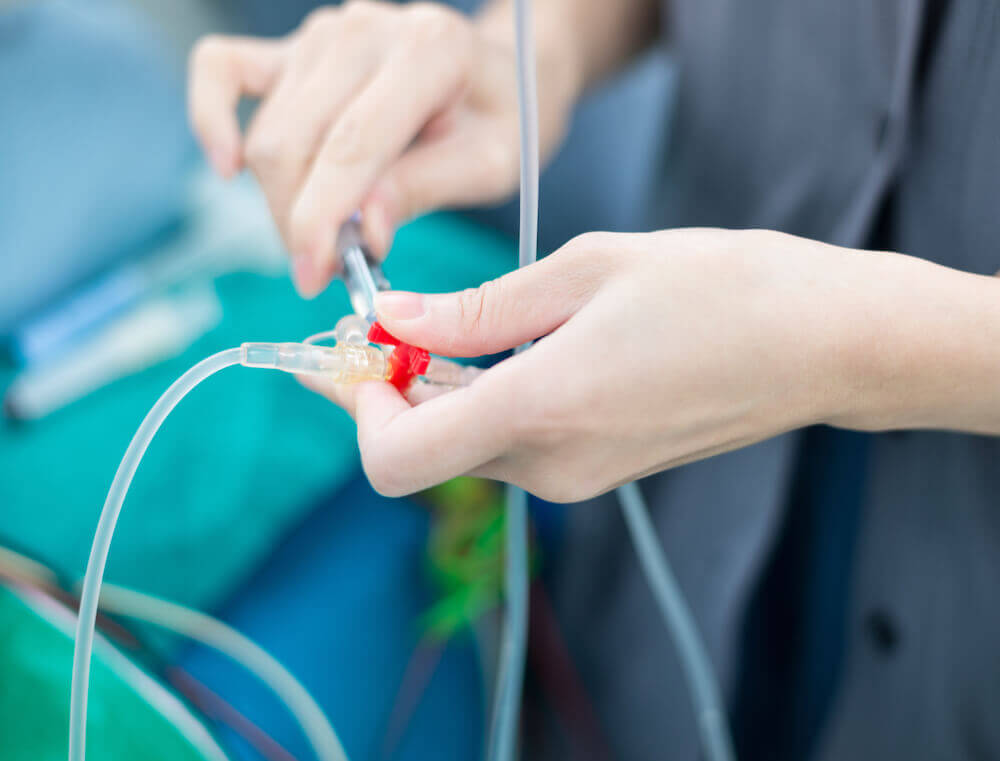Adenosine is one of the most common medications you’ll see throughout your PALS certification or recertification course. Continue reading to see what you should know about this life-saving treatment.
Table of Contents
Overview of Adenosine
Adenosine is a very diverse medication that is used for several reasons. According to WebMD, it can be “given intravenously by healthcare providers for treating surgical pain and nerve pain, pulmonary hypertension, and certain types of irregular heartbeat. It is also given for controlling blood pressure during anesthesia and surgery and for heart tests called cardiac stress tests.”
When it comes to Pediatric Advanced Life Support (PALS), adenosine is most commonly seen as an antiarrhythmic medication. It is a prominent area of study in several of the PALS course algorithms. Most commonly, it is used as the primary drug of choice for treating various forms of supraventricular tachycardia (SVT)--also known as an irregular heartbeat characterized by an exceptionally high pace.
Administering adenosine to someone suffering from SVT can be extremely effective because it temporarily blocks conduction through the atrioventricular (AV) node. Because of this fact, it should be considered immediately after unsuccessful vagal maneuvers.
eMedCert’s PALS certification and recertification programs offer extensive detail on essential medications for emergency pediatric environments. Continue reading for an overview of how to administer adenosine as well as important tips that can help you when utilizing this medication.
Initial Dose of Adenosine
For the first dose of adenosine, the standard procedure is to administer 0.1 mg/kg (maximum dose: 6 mg) as a rapid IV bolus. You should be able to tell if the first dose is effective within 15 to 30 seconds of administration, as the abnormal heart rhythm will convert to standard sinus rhythm.
Second Dose of Adenosine
If the patient's initial dosage does not produce a regular sinus rhythm, then it’s important to administer a second dose of adenosine. The second dose should be given in the amount of 0.2 mg/kg (maximum dose: 12 mg).
In addition, remember that, due to the short half-life of adenosine, it must be administered as rapidly as possible following the event of SVT. Oftentimes adenosine is ineffective due to the drug being administered too slowly or with an inadequate IV flush, so it’s critical to adhere to the guidelines which emphasize quick delivery.
Important Notes on Administration of Adenosine
- Adenosine must be given as a bolus, followed by a flush.
- Dosages should be given with continuous EKG monitoring.
- Note that adenosine does not treat atrial flutter, atrial fibrillation, or tachycardias caused by mechanisms other than reentry through the AV node.
- Adenosine can be used as a diagnostic operation to distinguish atrial flutter from SVT.
- Caution must be used when administering adenosine to those with asthma as it can cause bronchospasm.
- Common side effects of adenosine include temporary flushing and chest tightness.
- Finally, it’s normal for several seconds of bradycardia to ensue after administration of adenosine.
If you are looking to obtain or renew your PALS certification, reach out to us at eMedCert today. You can sign up for our 100%-online PALS certification or recertification courses right on our website. In addition, you can contact us for more information.
